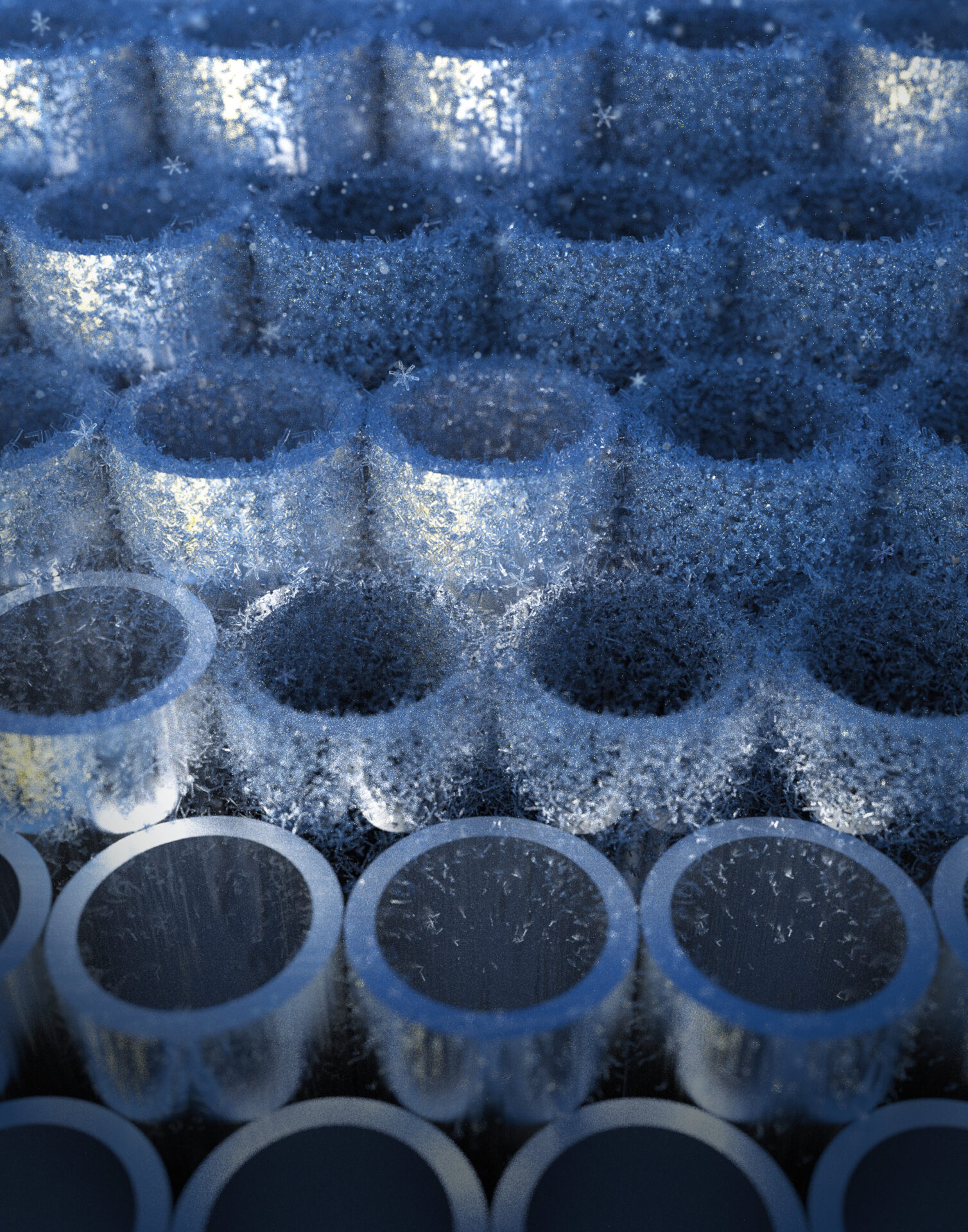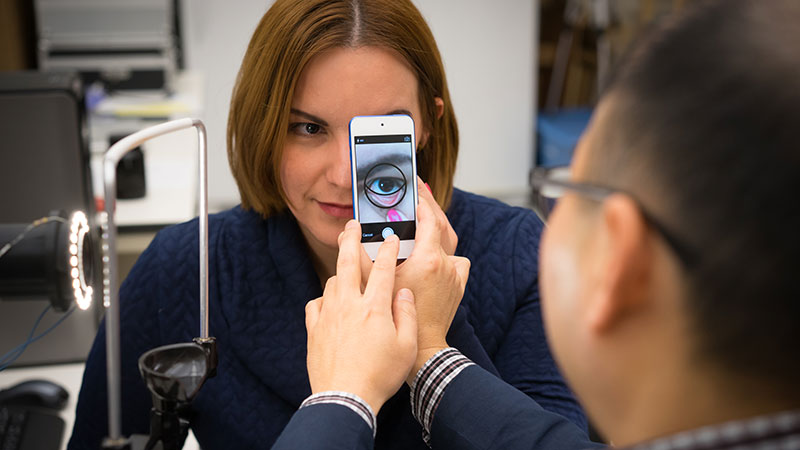
Appearing green on a vial lid (left), this structural color material becomes colorless (right) when warmed.
Adapted from ACS Nano 2023, DOI: 10.1021/acsnano.3c00467
Some foods and medicines, such as many COVID-19 vaccines, must be kept cold. As a step toward a robust, stable technique that could indicate when these products exceed safe limits, researchers in ACS Nano report a class of brilliantly colored microcrystals in materials that become colorless over a wide range of temperatures and response times. As a proof of concept, the team packaged the color-changing materials into a vial lid and QR code.
Walk-in freezers and refrigerated trucks generally maintain their set temperatures, but accidents can happen. Wireless sensors can monitor the temperature of individual products, but these devices produce a lot of electronic waste. Recently, researchers have suggested using materials that act as visual indicators to provide this information with less waste. Yet some current options using colorful reactions or dyes produce hues that can fade. Or they only track above-freezing temperatures, which isn’t useful for some COVID-19 vaccines that can actually start breaking down below freezing — above -4 or -94 degrees Fahrenheit. So, Yadong Yin, Xuemin Du and colleagues wanted to develop a better color-changing material with tunable melting to track a wide range of temperatures.
The researchers used structural colors, instead of dyes, for their indicator system. The team made glycerol-coated silicon dioxide nanoparticles, which appeared bright green or red when they clustered together into microcrystals in water. Next, they created liquids with variable melting points by mixing different proportions of polyethylene glycol or ethylene glycol and water. When these two parts were put together, they could produce an irreversible color loss when the temperature-triggered solution melted and the microcrystals broke apart. The materials could be customized to track temperature exposures from -94 to +99 degrees Fahrenheit that lasted from a few minutes to multiple days. In other experiments, the two-part indicator systems were packaged into flexible round vial labels and a QR code. These systems were very sensitive and successfully indicated when the materials got too warm. The researchers say that structural color-changing materials hold promise for the diverse scenarios encountered in medical cold supply chains.
Original Article: Color-changing material shows when medications get too warm
More from: University of California Riverside | American Chemical Society | Chinese Academy of Sciences
The Latest Updates from Bing News
Go deeper with Bing News on:
Color-changing materials
- Enhanced Representation of Persons With Skin of Color in Rheumatology Materials
Researchers assessed recent changes in the representation of people with skin of color among commonly referenced rheumatology educational materials.
- Fluorite AG Glass Makes New Dazzling Color-changing Design Possible
Fluorite AG Glass design is a new, innovative approach that enables smartphones to change color under different lighting.
- How to change the text message bubble color in Google Messages
Google's latest way to customize the color of your Google Messages chat bubble lets you add a touch of personality to your conversations. With this feature, the company builds on Google Messages' most ...
- Google Pixel 8a in Coral seems unlikely — but the color is tipped to reappear as an official case
Recent leaks suggest the Google Pixel 8a will be available in 4 colors — black, porcelain, blue and a mint-like green. If those aren’t the colors you were hoping for, then one of Google’s official ...
- How to Change EVE’s Hairstyle in Stellar Blade
If you want to try different hairstyles, hair colorings, and hair length in Stellar Blade, find out how to change them right here!
Go deeper with Bing News on:
Structural colors
- CITIZEN Celebrates 100th Anniversary of First Watch with new LAYERS of TIME Collection
Introducing LAYERS of TIME: five limited-edition models with geological-inspired dials, all powered by CITIZEN’s Eco-Drive technology.
- Analysis of Thutmose III’s Tomb Paintings Reveals Unprecedented Colors and Minoan Techniques
The project is a joint venture between the European Center for Archaeometry (CEA) at the University of Liège, the Laboratory of Molecular and Structural Archaeology ... of high-quality pigments and ...
- New Physics Model Helps Engineers To Create Nanoscopic Patterns, Just Like Butterflies Do
Such patterns are frequent in biological systems and also used in nano-engineering to create structural color. With their new insights, the scientists can predict the length scale of nanoscopic ...
- Pattern formation in the nano-cosmos
Such patterns are frequent in biological systems and also used in nano-engineering to create structural color. With their new insights, the scientists can predict the length scale of nanoscopic ...
- New model extends theory of pattern formation to the nano-cosmos
Such patterns are frequent in biological systems and also used in nano-engineering to create structural color. With their new insights, the scientists can predict the length scale of nanoscopic ...









